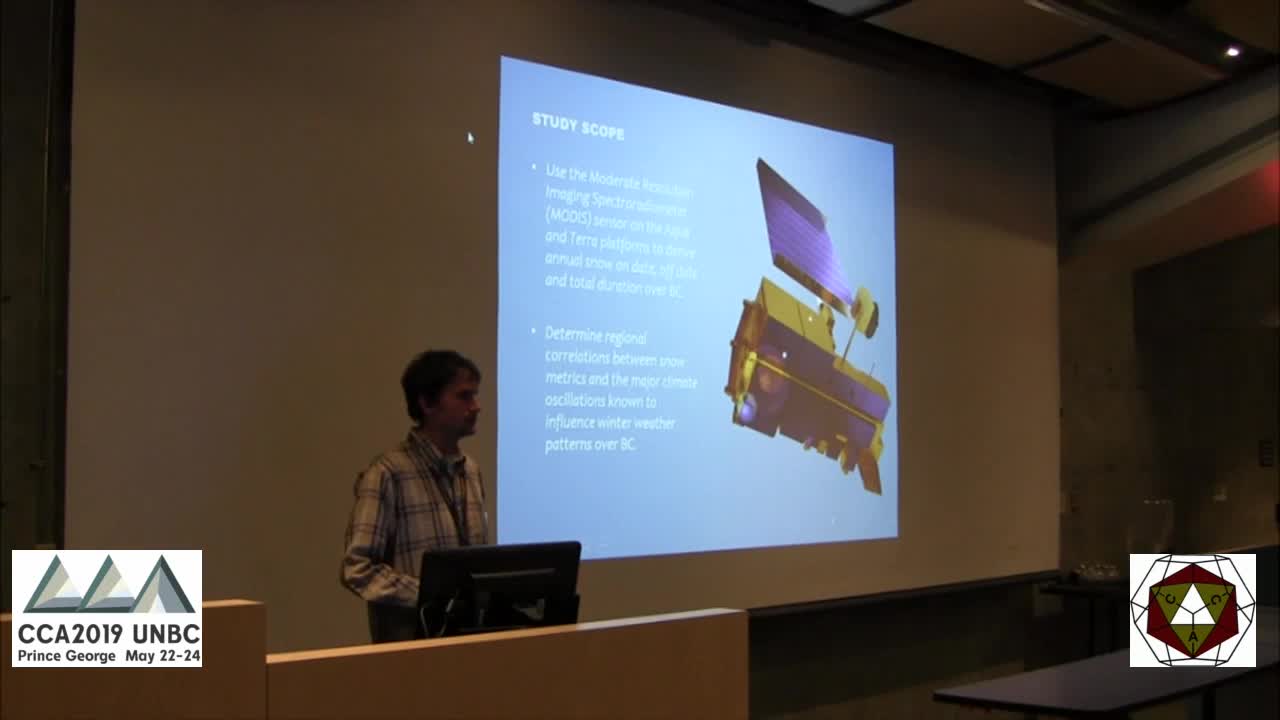We use the twice daily Moderate Resolution Imaging Spectroradiometer (MODIS) snow cover product to understand the regional influence of the Oceanic Nino Index (ONI) and Pacific Decadal Oscillation (PDO) on snow cover in British Columbia (BC). We apply a novel LOWESS interpolation to the MODIS time series of Normalized Difference Snow Index (NDSI) values to derive the timing and duration of snow.
 We confirm the general consensus from many previous studies that both ONI and PDO have significant impacts on snow cover in BC. We add to this knowledge by performing seasonal and regional analysis using established hydrozones, and explore variation in our results by elevation bins of 500 m. We calibrate and validate our method with in-situ snow observation data.
We confirm the general consensus from many previous studies that both ONI and PDO have significant impacts on snow cover in BC. We add to this knowledge by performing seasonal and regional analysis using established hydrozones, and explore variation in our results by elevation bins of 500 m. We calibrate and validate our method with in-situ snow observation data.
The optimal NDSI thresholds for the start and end dates were 15 and 10, and the mean absolute error between the two datasets was 8.5, 5.9 and 14.3 days for the start, end and duration of snow cover, respectively. In general, the onset of snow is poorly correlated with both ONI and PDO, whereas snow ablation and duration are strongly negatively correlated.
The largest magnitude linear relationships are in the southwest of the province, with the strongest relationships found in the Coast Mountains between the duration of snow and the summer ONI values (-24.7 ± 4.2 d °C-1). These relationships vary spatially and with elevation in BC and provide insights for seasonal forecasting of river levels, drought and wildfire and other natural resource applications.



